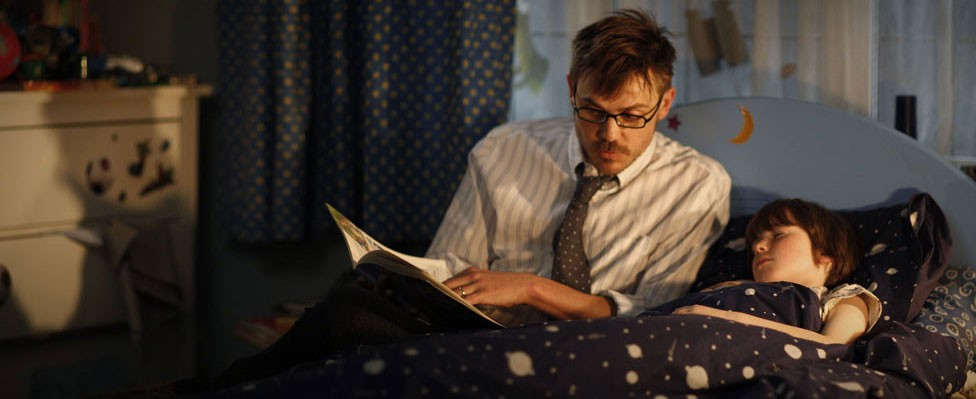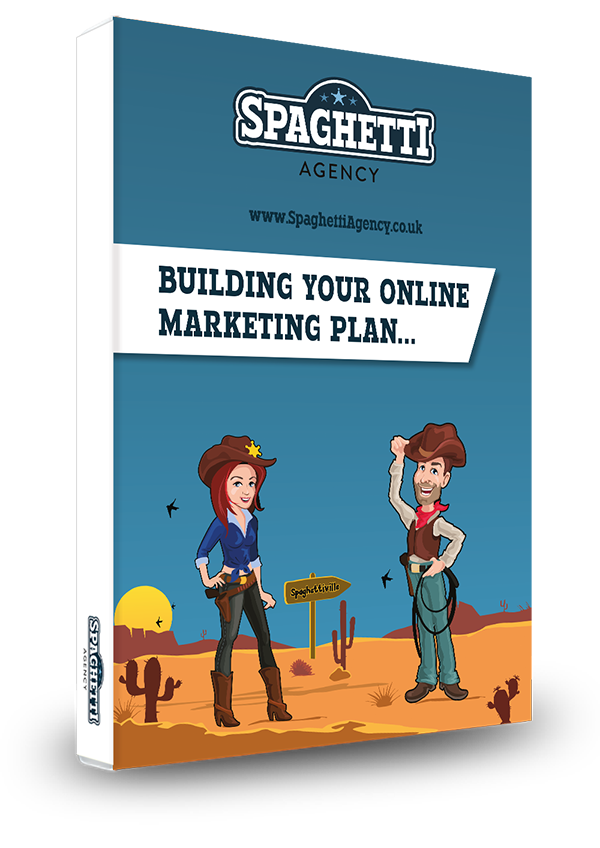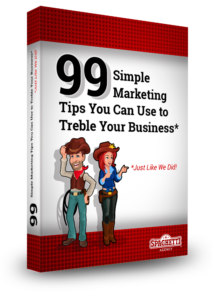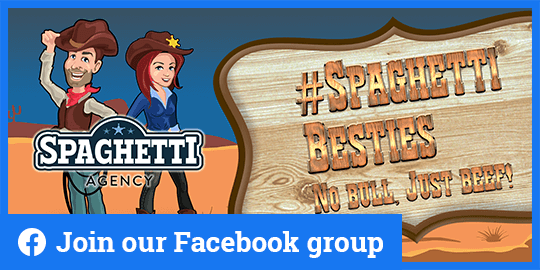Friday Digital Roundup
The Friday Digital Roundup is a witty take on the weird world of the internet. With fun stories from around the globe, it’s the only email newsletter you’ll actually read and enjoy!
We do love writing it, but clearly not as much as people like receiving it - just look at the response we got when a technical hitch meant it wasn’t sent out on time!
@Spaghetti_Jo
Coffee and the FDR is how I start my Friday.
Do not engage until I have devoured both
When it comes to the end of the week, there is no better way to start a Friday than with a run around the internet with Todd and Jo in the FDR. Just don't let them know I do it from the loo!
@Spaghetti_Jo
My inbox is full of rubbish newsletters that Im constantly deleting😬 My VIP inbox is for 1 thing only- THE DIGITAL ROUNDUP🤠I dont read a Newspaper or the news online, I just wait for Fridays, when this lands in my inbox- then I know ‘The weekend has landed’🤗
Get the Friday Digital Roundup and see what everyone’s talking about.
We may look like cowboys, but we’ll never abuse your data! Find out what we’ll do with it here, partner.
Spaghetti Blog
The power of storytelling on social media
Today I gave a talk for a Midlands radio group who wanted to know how social media can ‘tell the story’ of a brand. Storytelling isn’t a new concept in marketing; in fact it’s a tried, tested and successful method.
The idea of storytelling is nothing new, and good advertising often really captures its audience using storytelling. As businesses struggle to keep up with the ever-changing world of social media I’m always quick to point out that we don’t need to re-invent the wheel.
Social media is just storytelling, but on a new platform. Forget the technology and the hashtags and acronyms; the principles are the same.

The power of storytelling on social media
I want to tell you a story…
How did that sentence make you feel? Starting with those words is a great trick for public speaking. It captures people’s imagination as well as their attention. Most of us will have been read bedtime stories and we all (to a point) learn by storytelling.
Storytelling dates back as far as we can see. In ancient tribes a wise man would tell stories and fables to the tribes people, who then in turn told their version of the story to others in their tribe and beyond. The story carried with the people and it went around many, many people for generations. It was the early days of sharing viral content. When we tell a story people buy into it more, and they also remember it more vididly. If your brand is the hero in that story then all the better!
Advertising caught on
Advertisers quickly learnt that telling a story worked well and used this in their adverts, on billboards, on TV and anywhere they could. The scene was set, the problem was created and the brand was hailed the heroic solution (and they all lived happily ever after).
Then social media arrived and storytelling changed. Now we can reply to the storyteller. Now we can give our own thoughts and interpretations to it, and now advertisers have to think on their feet with their stories.
#BearAndHare
A great example of a recent storytelling success has to be the Bear and Hare campaign by John Lewis. It’s a simple story about a hare who didn’t want his friend the bear to miss out on the Christmas festivities. While the bear is asleep, the hare sneaks back to his cave and leaves a gift of an alarm clock to wake him up. John Lewis (the heroic solution) provides the alarm clock to help them.
The simple storytelling with added emotion (and a memorable soundtrack) captured the audience’s need for emotional connection. The hashtag pushed the conversation onto social media and the story continued across the networks and back to the video – a viral machine!
The man your man could smell like
Another great example is the Old Spice campaign. Once an older man’s brand whose popularity was waning, the marketing bods at Old Spice realised that they needed to do something different. Women, not men, bought the shower and bath products – so they needed to tell their story to women.
The TV advert featured an attractive and charismatic man in a towel talking to ladies about their man (who was presumed not as attractive) and made the Old Spice product the heroic solution.
“Use this and your man could be like me and all this could happen” was the implied message.
Of course it was so daft that no one really believed in the claim, but the story worked as it was funny and different. The brand saw an increase in sales of over 20% and their YouTube channel became most popular brand channel at the time. Old Spice used social media and their YouTube channel to react to comments by viewers. They even responded to commenters with videos tailored to those comments. It was pure genius and it propelled Old Spice into brand awareness heaven!
Why does storytelling work on social media?
If people feel a part of your brand then will stand up for it, share it and use it. Allowing people to be a part of your journey is a very powerful thing and social media allows us to do that like never before.
I started my social media career by accident. Back in 2011 I organised a tweetup (get together for local Twitter users) and I’ve never looked back. By organising the event on social media it really helped it propel. People talked about the event with me and got involved with the organisation. The more people heard about it, the more people wanted to be a part of it. Everyone who came was there because they’d seen it evolve from a suggestion of a drink at a pub, into a well-organised networking event.
I’ve never stopped telling my story via my blogs. People read the blog updates and follow the story, and I’ve blogged about local shopping, marketing, and autism, They choose to read because they feel a connection to my content, so they share it, then it goes further and more people read and share it. The cycle continues.
I guess it comes down to why people share. Here’s what the New York Times came up with:
Why people share content
- To bring valuable and entertaining content to others
- To define ourselves to others
- To grow and nourish relationships
- To get the word out about causes and brands they care about.
Of course channels like Twitter and Facebook are usually just the vehicle. A blog or a YouTube channel are often the preferred ways to share the storytelling, but you can share your journey gradually via tweets and status updates as well.
A picture paints your story so well
The benefit we have now is images and the simple way in which we share them. Think back to the Egyptians. They told stories with Hieroglyphics – simple pictures describing a story. Imagine what ancient Egyptians could have done with an iPhone 5 camera?!
We have it easy. We have the tools and the speed to tell stories in high resolution and with incredible speed. And everyone loves images. Is it any wonder that Pinterest is the fastest growing network at the moment?
Four more years – so simple it went viral!
Barack Obama used social media storytelling to incredible effect. On hearing the news of his re-election, he posted one of the most retweeted images in Twitter’s history.
Four more years. pic.twitter.com/bAJE6Vom
— Barack Obama (@BarackObama) November 7, 2012
The reason the ‘Four more years” tweet hit home so well was because we’d all been on his journey. The frequent updates and storytelling in the media and online had captured the world’s attention and created the perfect hero and heroine. Posting just three simple words and an emotive image was just the finale.
Good storytelling has:
- A setting
- A problem to solve or a villain to defeat
- Characters that need help
- A hero (or solution) to help them
- And then of course a great ending and summing up.
Your story may not have finished yet (neither has mine) but I have mini-stories along the way, and even events that I speak at have the main ingredients.
- Set the scene – I get booked to speak at an event
- A problem to solve – businesses often need to learn more about social media
- The characters are the attendees and I try to talk to them on social media to bring them into my story
- The hero? Well that’s us. JCF is the brand that can help them succeed from the anxiety (the villain) of using social media for business
- The conclusion? Well that’s tweets to us after the event, a concluding blog and maybe an Instagram selfie of the guests!
My followers and social fans are with me from conception to completion and although they don’t all come along, they feel like they were a part of it. They feel like they are part of our journey and that strengthens their affiliation with us as a brand.
Over-sharer?
Why don’t you try it? I’m always told I’m an over-sharer but everything that’s enriched my life in the last three years has come from social media, so why wouldn’t I?
Our fantastic business, my partner (in life and business), my friends and new clients and opportunities are all part of my life because I’m online. People read my story and follow my journey, wanting to know what’s going to happen next.
I want to tell you a story – and if you like, you can be a part of it!
Now it’s your turn…
What do you think? Do you use storytelling to create awareness for a brand? What are the best tools you use?
Watch our #ToddsTips video on storytelling
Tags associated with this article
Social Media StorytellingPost a comment
We'd love to know what you think - please leave a comment!






0 comments on this article